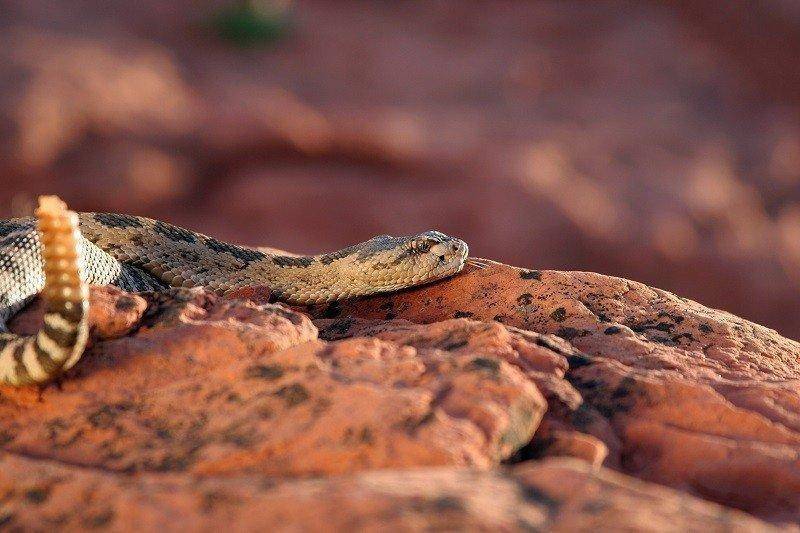DWR Press Release
Rattlesnakes are found throughout Utah
Coming across a rattlesnake in the wild—or in your yard—can be a frightening experience.
But it doesn’t have to be. If you respect the snake and give it some space, there’s almost no chance your encounter with it will be negative. And, if you can find a safe place to watch the snake, you’ll observe one of the most unique critters in the world.
“Rattlesnakes are a very important part of Utah’s ecosystem,” says Krissy Wilson, native aquatic species coordinator for the Division of Wildlife Resources.
“They control pests,” she says, “such as mice and voles. They’re fascinating creatures.”
Tips to stay safe in rattlesnake country are available from Wild Aware Utah. You can get the free tips at www.wildawareutah.org/utah-wildlife-information.
Southwest Partners also provides free rattlesnake safety information. A copy of the organization’s “Living with Venomous Reptiles” brochure is available at https://bit.ly/1Fd8THh.
Staying safe
Wilson says summer is the time of year when most rattlesnake encounters happen in Utah.
Eight rattlesnake subspecies live in Utah. The most common is the Great Basin rattlesnake. The Great Basin ‘rattler’ is found across the state.
Rocky, talus slopes are the places in Utah where you’ll most likely encounter rattlesnakes. In fact, Wilson says there’s a good chance you’ve been close to a snake while hiking and never knew it. “A snake’s camouflage allows it to blend into its surroundings,” she says. “They’re tough to see.”
When you encounter a rattlesnake, the way you act will likely determine what happens next. Like most animals, rattlesnakes fear humans. “They’ll usually do everything they can to avoid us,” Wilson says.
Respecting the snake, and giving it plenty of space, are the keys to avoiding problems. One thing you don’t want to do is approach the snake.
“I can’t overemphasize how important it is to give snakes space, to watch where you step, to watch where you place your hands when you sit down, and above all, to resist the urge to harass or kill a snake,” she says.
Wilson also reminds you that rattlesnakes are fully protected by Utah law; it’s illegal to harass or kill one.
Hiking tips
If you encounter a rattlesnake while hiking, Wilson recommends the following:
Tip 1 – Remain calm. Do not panic.
Tip 2 – Stay at least five feet from the snake. Give the rattlesnake plenty of space.
Tip 3 – Do not try to kill the snake. Doing so is illegal and greatly increases the chance the snake will bite you. Wilson says most venomous bites happen when untrained people try to kill or harass a snake. “Usually, the snake is simply moving through the area, sunning itself or looking for a place to hide,” she says. “If you leave the snake alone, it will leave you alone.”
Tip 4 – Alert people to the snake’s location. Advise them to use caution and to respect the snake. Keep children and pets away.
Keeping snakes out of your yard
Rocky, talus slopes aren’t the only place in Utah where you might encounter a rattlesnake. Depending on where you live, you could find a snake in your yard.
Aside from building a fence that rattlesnakes can’t penetrate, Wilson says the following are the best ways to keep rattlesnakes out of your yard:
Tip 1 – Reduce the number of places that provide snakes with shelter. Brush, wood, rock and junk piles are all items you should get rid of.
Tip 2 – Control rodent populations. Bird feeders and water are two of the main items that draw rodents to yards.
Tip 3 – Avoid scaring away harmless snake species, such as gopher snakes. Having other snake species on or near your yard may deter rattlesnakes from wandering through.
Tip 4 – Wilson says she’s heard of people using “snake repellents.” But she isn’t aware of any scientific testing that shows these products are effective.
For more information, call the nearest Division of Wildlife Resources office or the DWR’s Salt Lake City office at 801-538-4700.

